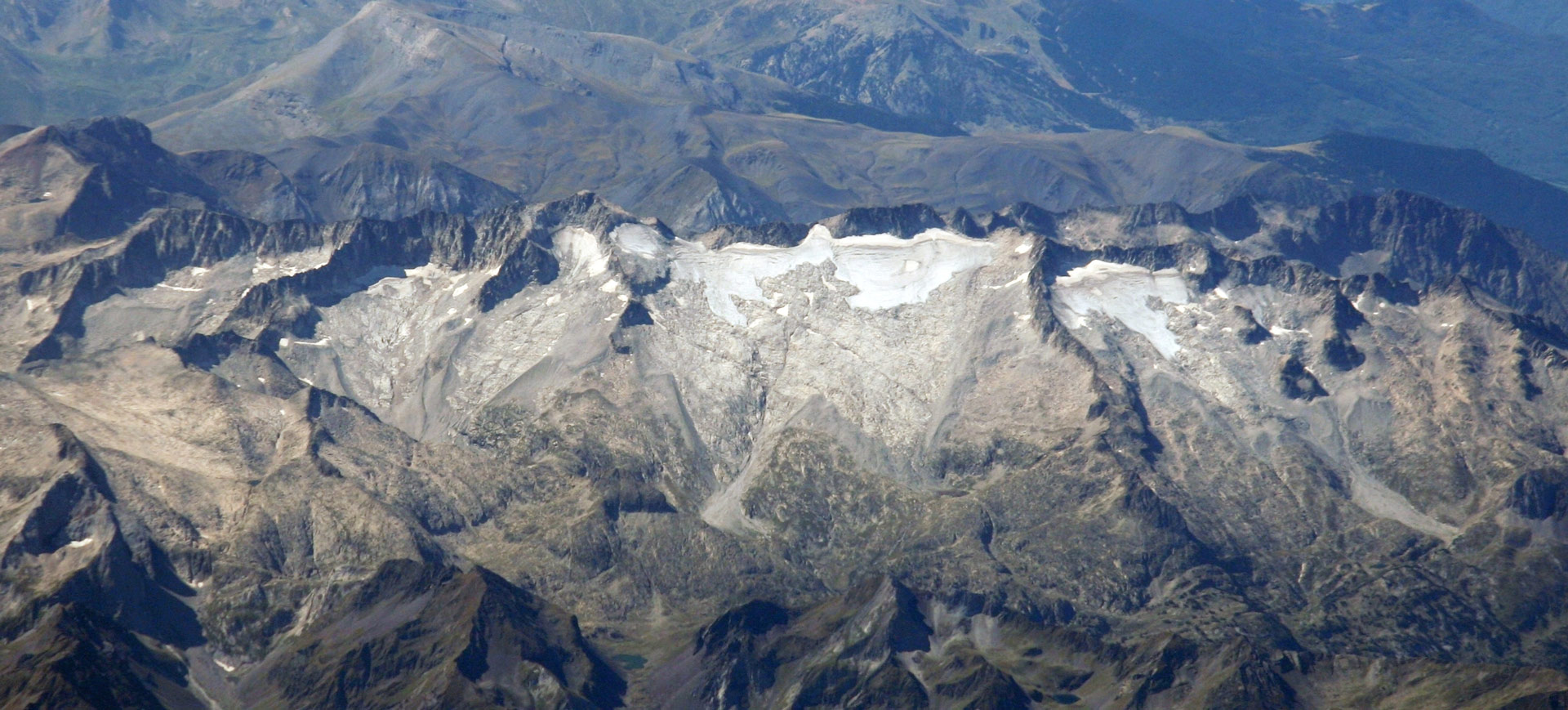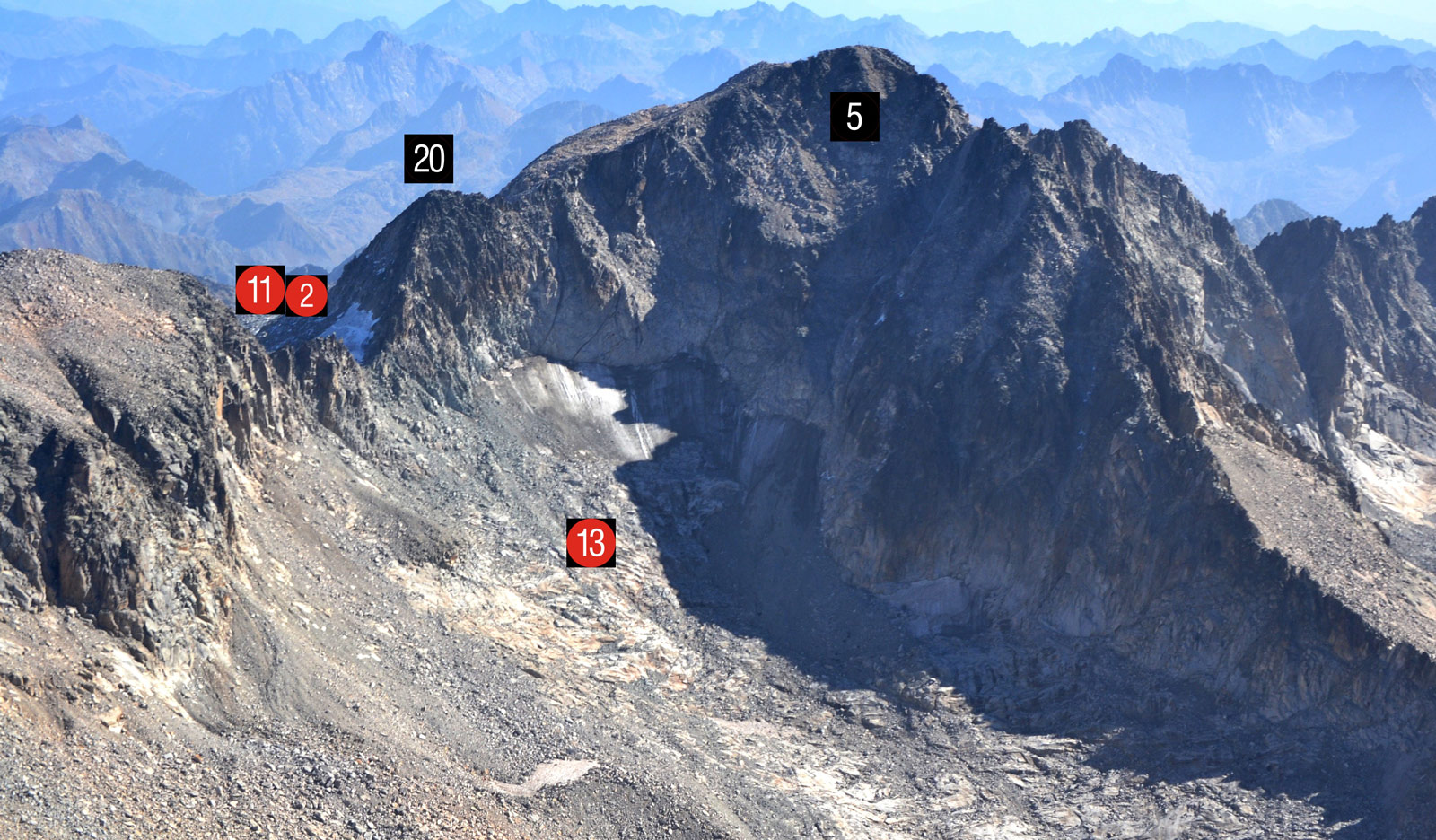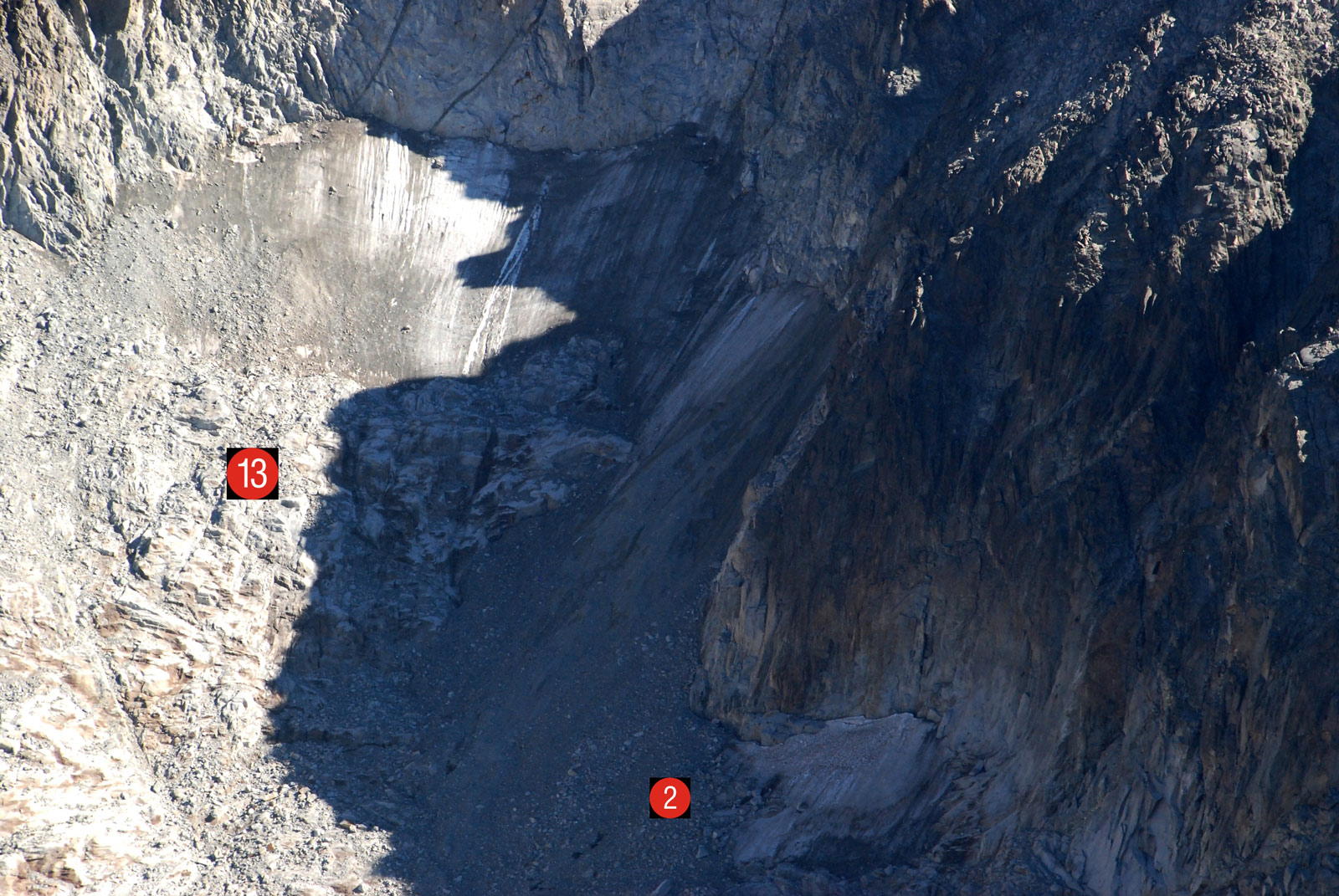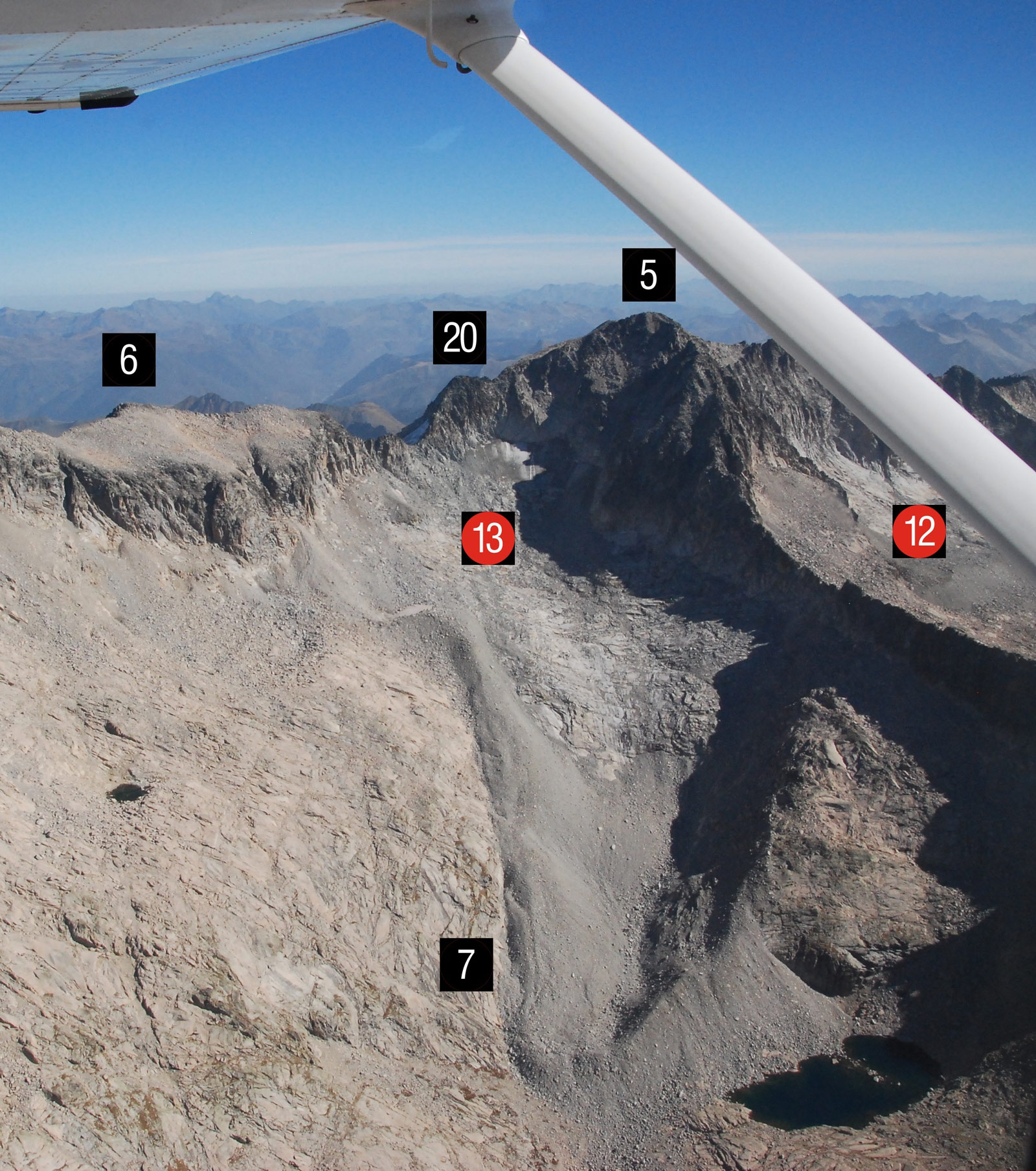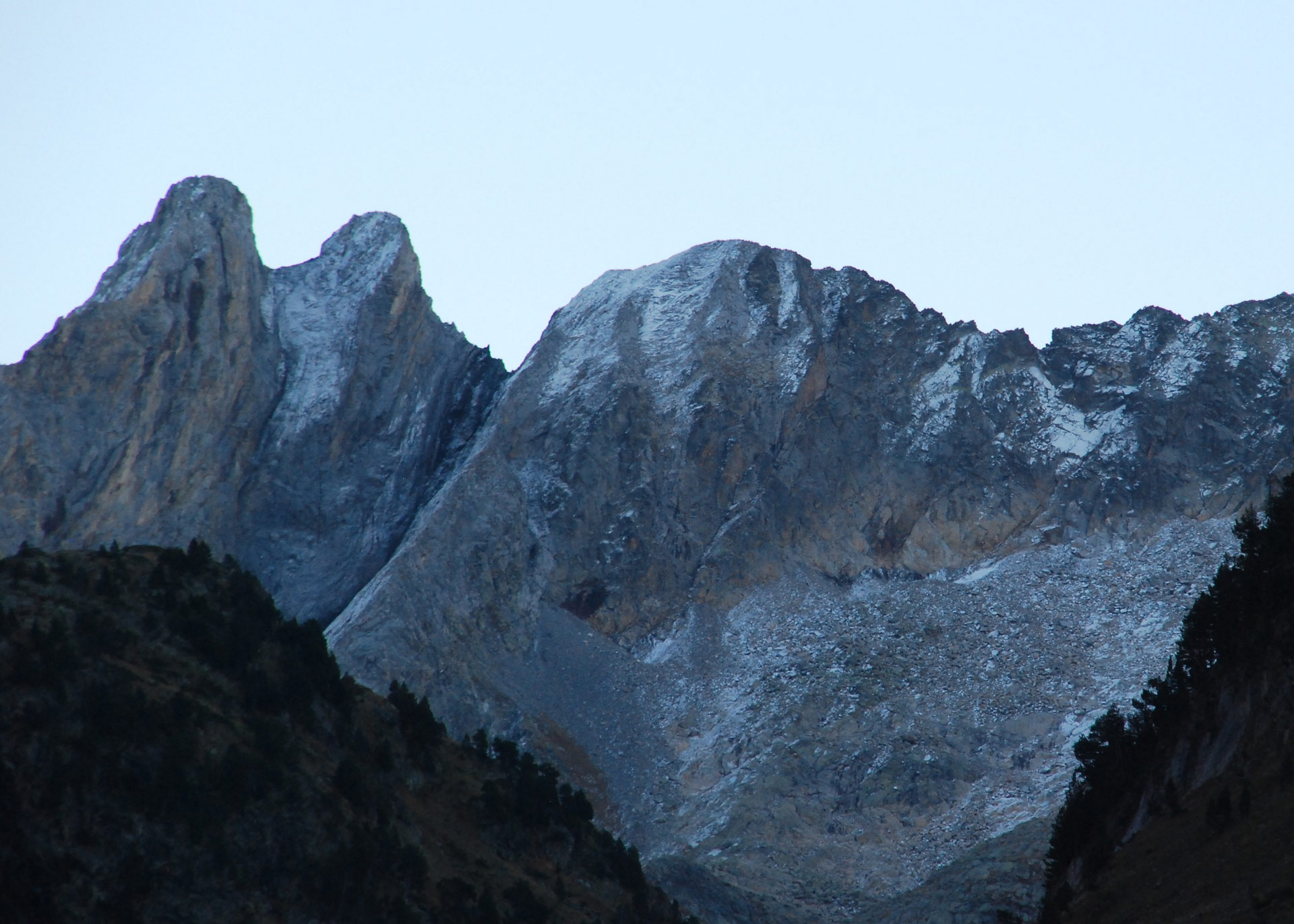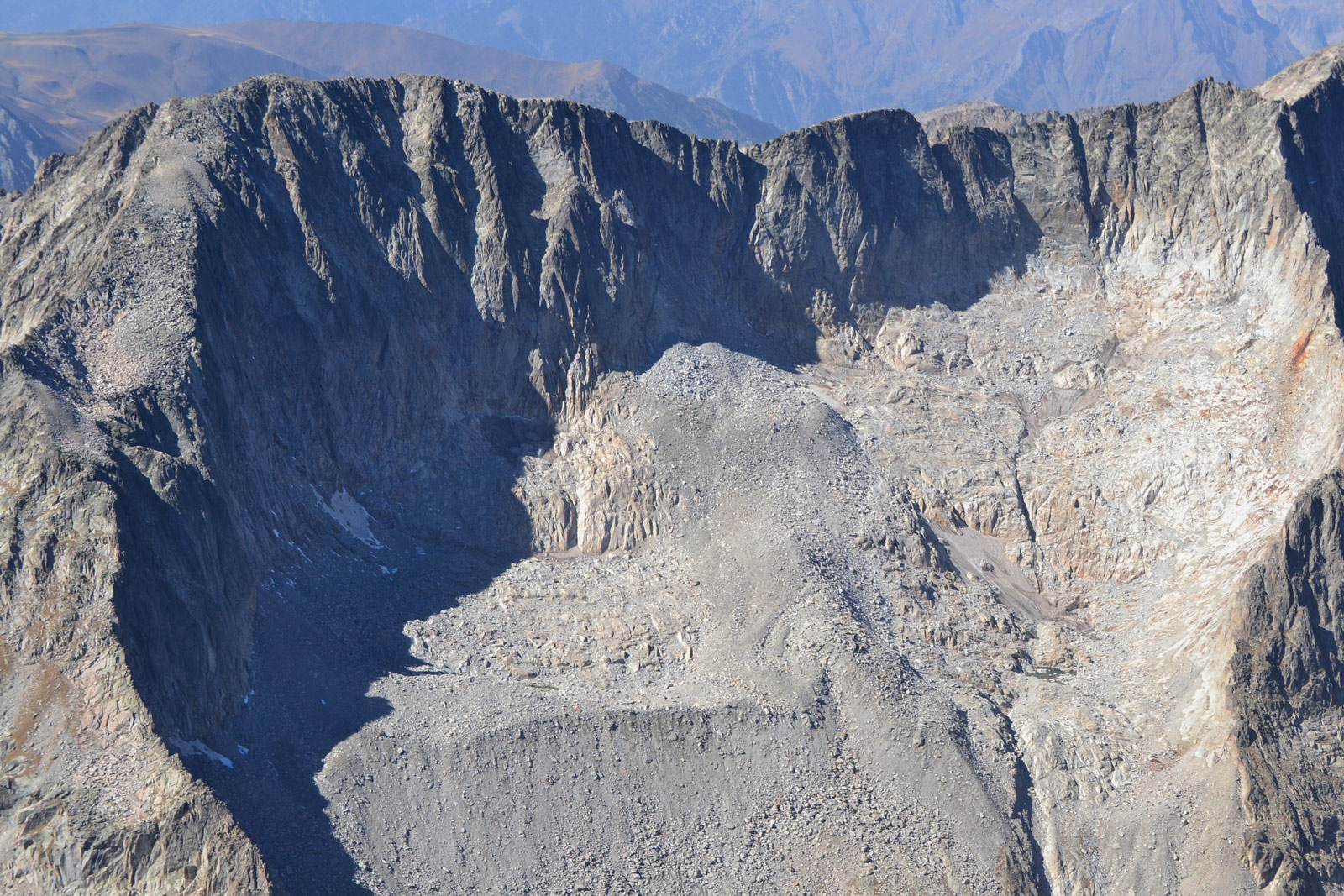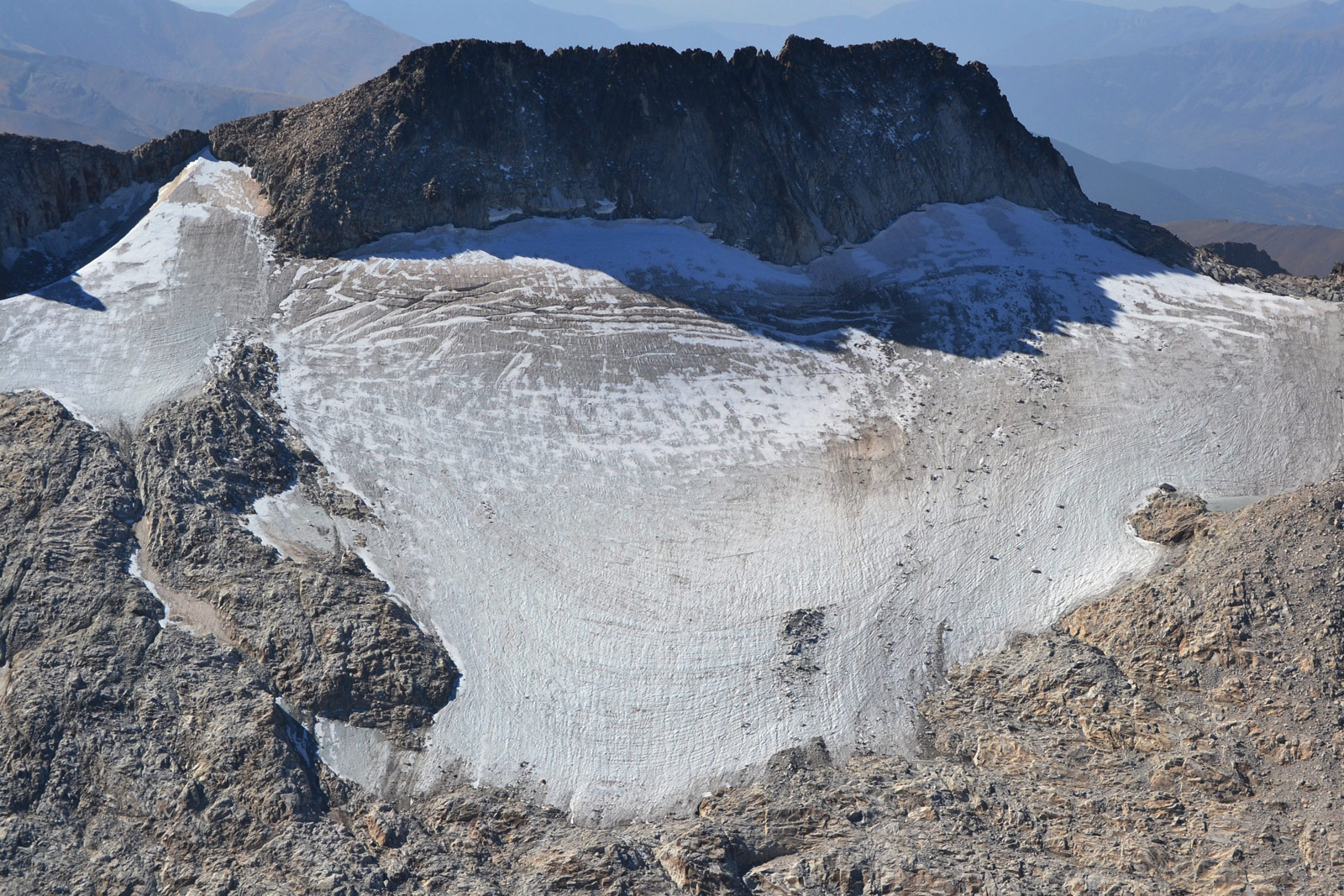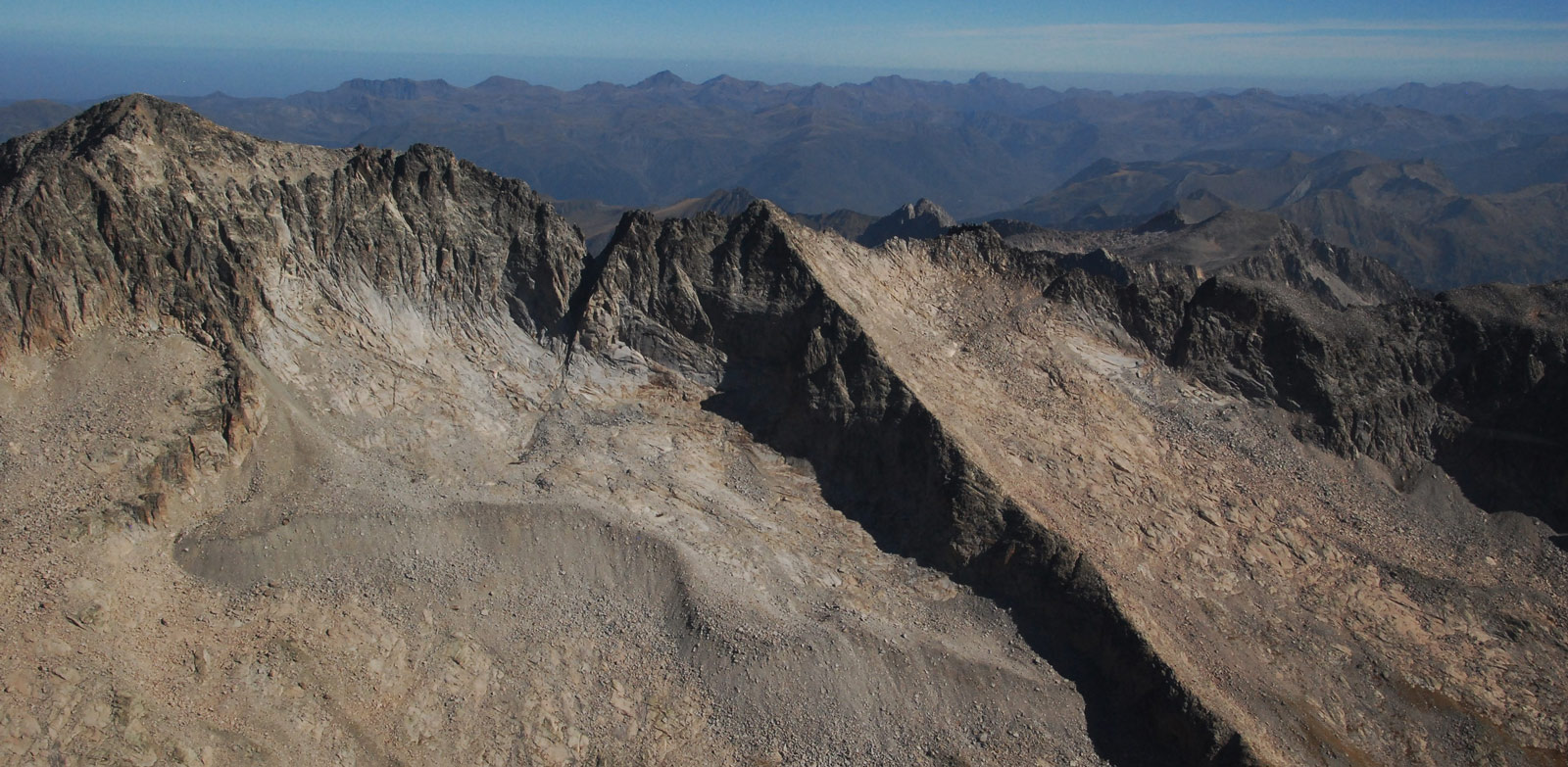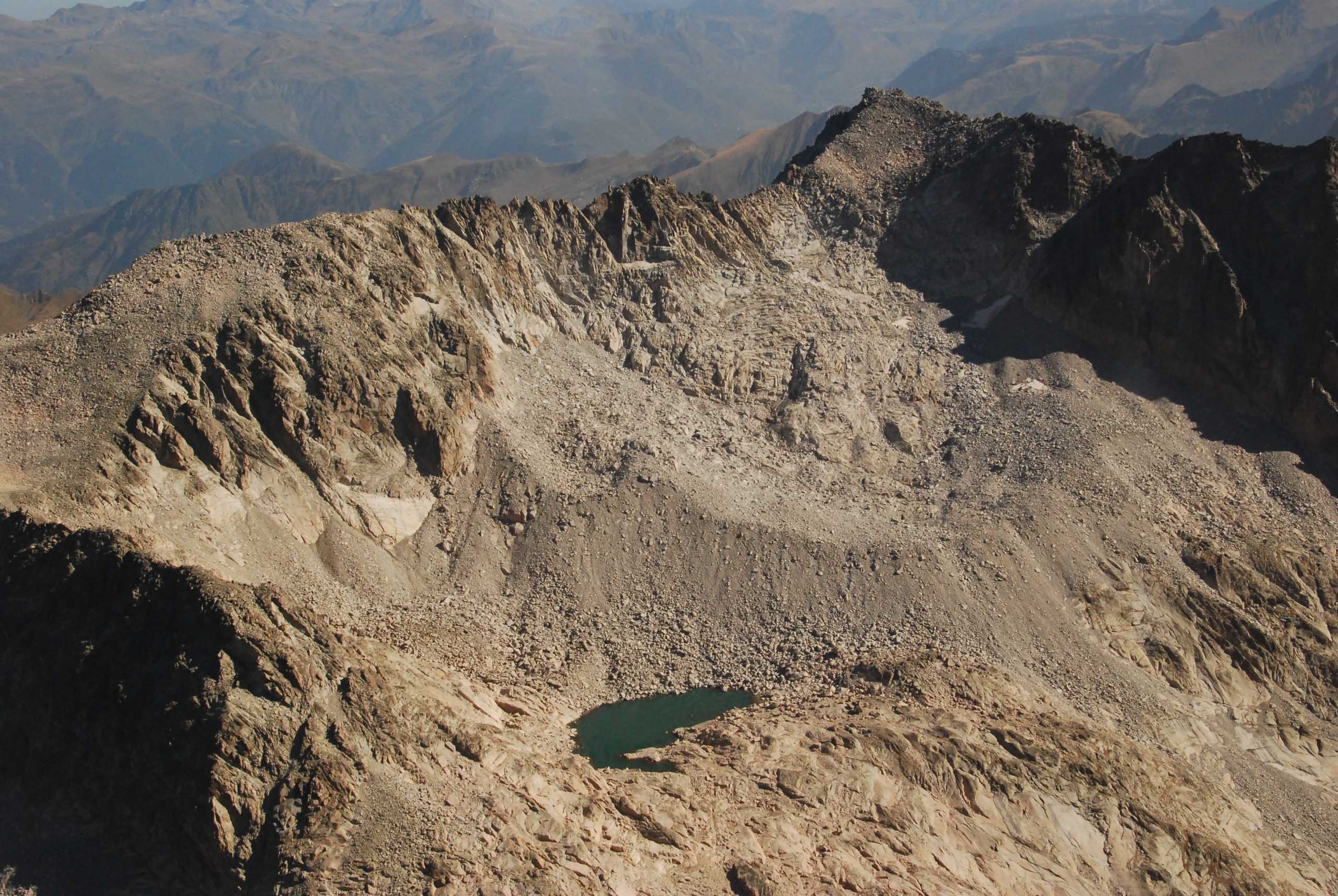The Coronas glacier was the last active glacier in the Pyrenees located on a southern slope. Its altitude, its orientation protected from solar radiation and the overfeeding generated by the recurrent avalanches in this area have been decisive factors in this fact.
Unlike Llosás, its preserved Little Ice Age moraine shows the longitudinal development of an ice tongue of 1.1 km. At the beginning of the 20th century it reached 675 m, reducing to about 325 m in the 1980s. Widespread ice thicknesses of between 7 and 9 m were still measured in 2002.
After fragmenting on several occasions, in 2011 there were no longer any signs of movement, and they were classified as an icefield . However, some ice fragments persist, very mimetised and difficult to distinguish, due to the accumulation of erosion material that covers them, adopting the morphology of black ice cores.
During the Little Ice Age, the Coronas glacier was the largest south-facing glacier in the Aneto-Maladeta massif, representing almost 6% of the massif’s ice. With a surface area of 41 ha, it was considered the 15th largest glacier in the Pyrenees, and its tongue the 13th longest.
Comparison of 36 years – 1987 – 2023. The active Coronas Glacier showing its still powerful crevasses in 1987 from Pico Del Medio (Jordi Camins). From the same location in 2023, with its two fragments in the form of black ferns (Salvador Ruíz).
Este aparato glaciar pertenece al siguiente macizo:
13) Coronas
Comparativa de imágenes


Comparison of 36 years – 1987 – 2023
The active Coronas Glacier showing its still powerful crevasses in 1987 from
Pico Del Medio. (Jordi Camins).
From the same location in 2023, with its two fragments in the form of
black glacier forelands. (Salvador Ruíz).


Comparison of 118 years – 1905 – 2023
Language and moraine of the Coronas Glacier from the Ibones de Coronas in 1905.
(Juli Soler Santaló – AFCEC).
Moraine and the two fragments in the form of black icicles in 2023, from the
ibones at dawn. (Salvador Ruiz).


